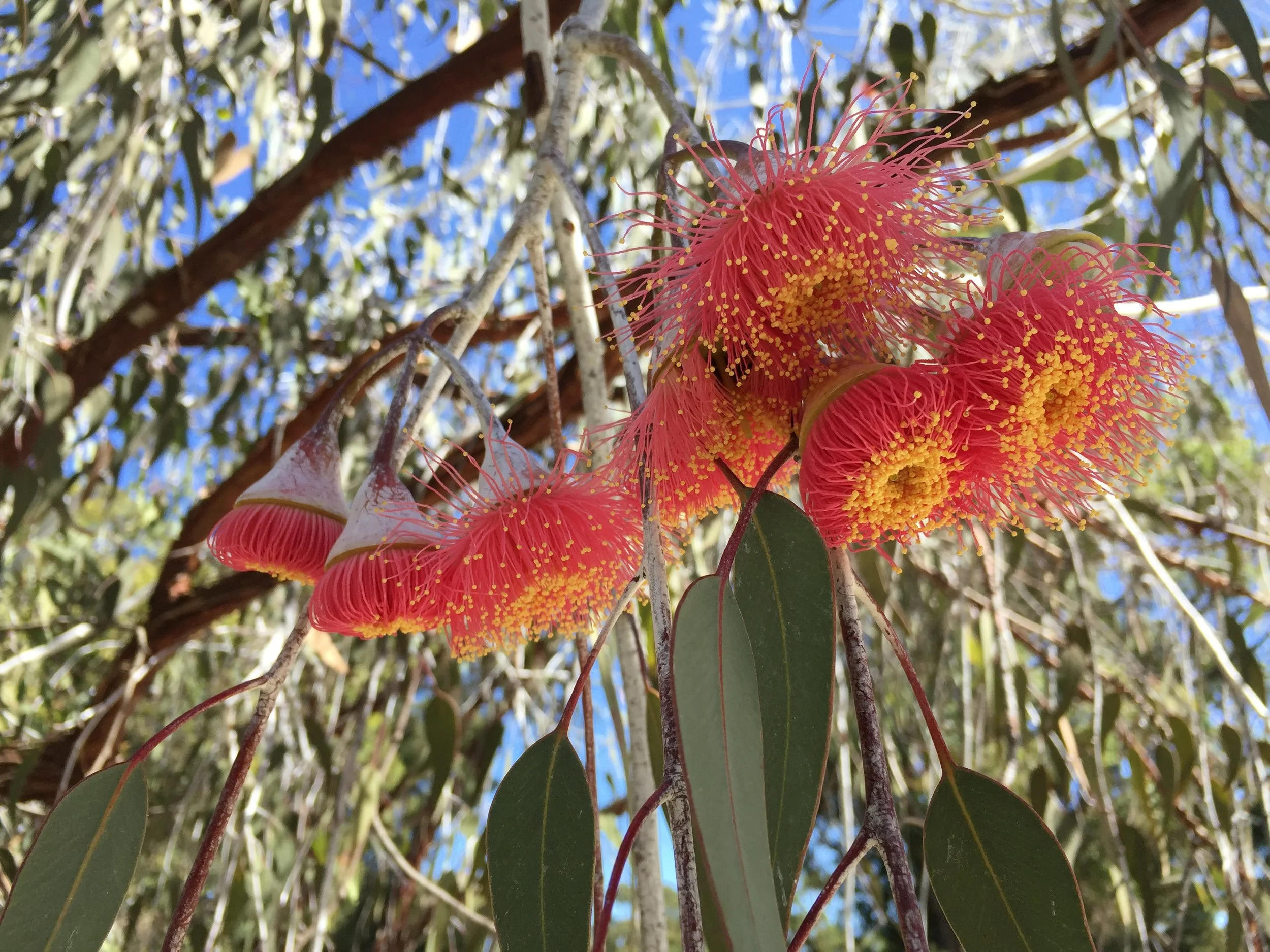The American author Rebecca Solnit writes that hope is not the belief that everything will be fine but at its most interesting consists of “broad perspectives with specific possibilities, ones that invite or demand that we act”.
This fact sheet is about hope turned into actions.
And fascinating, inspiring research that has delivered solutions which cool farms, cities and also Earth - and have restored rainfall that was lost because of lost vegetation and soil.
The research and solutions show this: take away trees and soil - and rain goes away, or floods come.
• Trees like this one in Perth’s Kings Park and Botanic Gardens, Western Australia, is an air cooling gift to those who sit beneath it
Earth’s natural water cycle is a huge air and soil-cooling machine.
Here are some facts, projects and suggestions for cooling your house, street, city or farm.
· In Chippendale, Sydney, NSW some 20 terrace houses installed leaky drains at a total cost of less than $300 and each year save over 4 million litres of rainwater a year to irrigate road verge gardens
· There’s five times more water as vapour in Earth’s air than the water in Earth’s rivers: Water in plain sight, Judith D Schwartz
· Referring to research, Schwartz says, “a thriving forest evaporates more water than does the ocean’ and pulls moisture inland away from the ocean
· In 1996, I disconnected my inner city house from mains water and sewer and for the last 23 years no water or sewage has left there, all used for drinking and recycling
· The four person household energy and water bills are less than $300 a year, using free sunlight and rain, and each year over 150,000 people see the model of it in the Powerhouse Museum
· The US agency studying Earth’s atmosphere, NASA, says, “We now think the water vapour feedback is extraordinarily strong, capable of doubling the warming due to carbon dioxide alone”
· NASA says water vapour is Earth’s most abundant greenhouse gas and may be the biggest cause of the planet’s broken climate
· In 2014 a report from the cathedral of climate science, the Intergovernmental Panel on Climate Change (IPCC) affirmed that water is one of many causes of Earth’s rising temperatures: “. . . by itself carbon dioxide is not the only and may not be the most significant cause of rising temperatures. The combination of several causes of rising temperatures multiplies the rate of heating of Earth.”
· The report goes on: “Land use change affects the local as well as the global climate. Different forms of land cover and land use can cause warming or cooling and changes in rainfall, depending on where they occur in the world, what the preceding land cover was, and how the land is now managed. Vegetation cover, species composition, and land management practices (such as harvesting, burning, fertilizing, grazing, or cultivation) influence the emission or absorption of greenhouse gases.
· The brightness of the land cover affects the fraction of solar radiation that is reflected back into the sky, instead of being absorbed, thus warming the air immediately above the surface. Vegetation and land use patterns also influence water use and evapotranspiration, which alter local climate conditions. Effective land use strategies can also help to mitigate climate change.”
· The US Los Angeles project - US urban example in Elmer Avenue - keeps stormwater, improves water quality, saves homeowners costs by reducing use of imported water, increases carbon in soil and plant tissue, creates more pleasant streetscapes, and educates the community.
· The US city of Tucson offers a rainwater harvesting incentives rebate program for single-family residential and small commercial customers.
· Since 2008, Tucson has required plumbing in new homes to allow homeowners to set up gray-water systems to reuse water from bathroom sinks, showers and tubs as well as washing machines to water plants and lawns. A third of household wastewater can be reused as grey water. The city also offers a $1,000 rebate to homeowners installing permanent grey-water systems.
· “Sponge” cities in China and potentially in the US’s Los Angeles keep rainwater where it falls by cleaning storm water, and retaining it in vegetated gardens.
• Leaves, when hot, reduce the water vapour they release by drooping their leaves and by closing their stomata - the little ‘holes’ through which they exude water vapour



